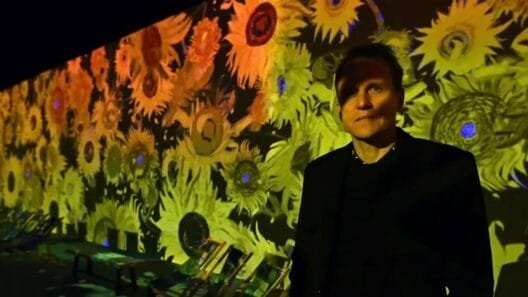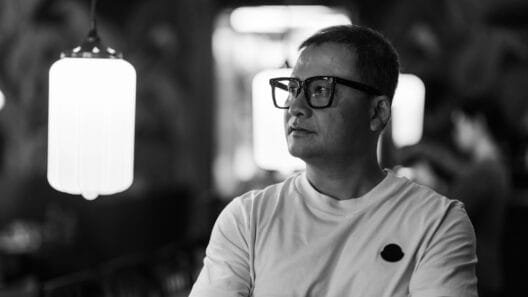Shane Mecklenburger on diamonds, Superman, and the American Way
Some weeks ago, I had the pleasure of attending the opening of Memento Mori, a unique exhibition at the Hoxton Art Gallery which delves deep into the meaning of mortality. Among the many talented artists whose works are currently being featured at the gallery (the exhibition runs until the 6th of October), I had the chance to chat with Shane Mecklenburger, the man behind the mysterious Armadillo Diamond. Assistant Professor of Art at Ohio State University, Mecklenburger describes himself as one who ‘examines value, transaction, and conflict by making diamonds, weaponising paint, turning love into money, and making music with shooter games’. He also happens to be one of the nicest chaps you’ll ever meet!
J: What was the inspiration behind the armadillo diamond? How was it created?
S: I was interested in using the market as an art material. I was also working at the School of the Art Institute of Chicago, which happens to be located on Jeweler’s Row downtown. Walking past these diamond stores every day, I started thinking about the similarities between the diamond world and the art world. Diamonds are an interesting case because their market value is driven almost entirely by what they mean to us symbolically and aesthetically. It’s got little to do with scarcity. And with the dropping cost of high-quality manufactured diamonds, this symbolic value is only becoming more pronounced. It’s a lot like art. I was remarking on this to an artist friend, Kristen Anderson and she said she recently met someone on the beach who had a company that makes diamonds from the carbon in the cremated remains of your loved ones. This led to an exchange with my artist friend Jonathan Liss about worthless carbon-based things that would be funny as diamonds.
Then I moved to Dallas. Driving is a way of life for Texans, and armadillos are a common casualty. I learned the armadillo is a fairly recent immigrant to the US from Mexico, and also the state animal of Texas. The armadillo became a symbol of contradiction in U.S. culture between acceptance and intolerance, and this compelled me to use an armadillo for the Roadkill Diamond. I spent a few days driving around to find one already slain by auto. This particular armadillo met its end in Palestine, a town near Dallas. I named it ‘Pal’, wrapped its remains in a white burial shroud, and took it to a pet cremator. I then sent 8 ounces of Pal’s ashes to a diamond manufacturer. After a few months of high heat and pressure in their lab we had a diamond. The manufacturing process is very expensive – far more than a diamond of this size and quality would be worth on the diamond market.
J: What is the basis of the valuation of the diamond?
[quote_right]It’s important that neither the artist nor the gallery determines the price, because the project is really asking ‘what is this worth?’[/quote_right]S: The ‘value’ of the diamond is determined through an auction. During the span of the exhibition at Hoxton Art Gallery (Sept 14 – Oct 6), there is an ongoing silent auction. Serious buyers may place any bid they feel is reasonable. The winning bid from this silent auction then becomes the starting bid in Summer 2012 at a live art auction in Dallas. This auction will also be open to the public at large, as well as bidders from the London silent auction. It’s important that neither the artist nor the gallery determines the price, because the project is really asking ‘what is this worth?’
J: The armadillo diamond is quite tiny as a work of art. Do you find it draws its strength as an art piece more from its physical composition, or the story behind it?
S: Neither, actually. The heart of the work is in its valuation – in the auction, which is a kind of ongoing performance in which anyone can participate.
J: Have you had anything else transformed into ashes? If so, why?
S: Yes. At this moment, gunpowder and Superman III are being made into diamonds. Gunpowder is mostly carbon, and I spent a year in a chemistry lab to remove the nitrates from .223 Caliber assault rifle ammunition, purchased in Dallas. This process made it safe to send to the manufacturer. I’m also making a diamond from 32 pages of the script of Superman III (1983). Superman is a classic U.S. mythology of itself, protecting truth, justice and the ‘American Way’. In Superman III, faulty technology and bad kryponite turn Superman into an asshole. Clark Kent has to separate himself from Superman’s body and struggle with him. I guess this set of three – roadkill, gunpowder, and Superman – are about where I’m from: the U.S.A. Our internal struggles and contradictions, our national self-perception and the way we are perceived, valued and devalued by the world.
J: Can you envision this becoming an alternative to burial and cremation?
S: It already is. Anyone who can afford it can be turned into a diamond when they die. Just put it in your will, register online and pay the fee.
J: How do you view mortality? What happens when we die?
S: I agree with Lech Majewski that we should talk to the dead because they often have more to say than the living.
J: Is there anything in particular that reminds you of the inevitability of death?
S: Cigarettes.
J: How has the armadillo diamond been received thus far? Do you find there are differences of opinion among American and British audiences?
S: I’ve been pleased with the reception. So far it’s only shown in London, so it’s too early to say if there are differences across the pond.
J: The armadillo diamond aside, what themes has your other work revolved around?
S: I have an ongoing series of eBay auctions in which I sell things like the Future and Culture, in their entirety, to the highest bidder. So this work is similarly interested in transaction, what we value, and the way we value it. My interest in performing a live art auction probably started with the eBay project. I also have a ‘sword-into-ploughshares’ theme that runs through my projects, many of which have dealt with shooter games, which are a perfect storm of markets, militaries and entertainment. I’m also interested in the places where technology breaks down or runs amok. In some ways I feel the diamond project deals with this phenomenon, since it’s really quite absurd that the technology exists to make an armadillo into a diamond, and it’s even more absurd that each and every one of us has access to such an elaborate and resource-intensive process. It’s modern alchemy, which is also a running theme in my work.
J: What can we expect from you in the future? Any plans to come for another exhibition in London?
S: More diamonds. After the gunpowder, Superman, and roadkill, proceeds from the auction will go toward funding the next set of three diamonds. And I have a long list of diamonds I plan to make make after that. At the moment I’m also working on the two videos that accompany the Gunpowder Diamond and the Superman III Diamond and a new software-based interactive work. My next show is in Dallas. I’d be more than happy to show in London again if the opportunity presents itself, but nothing’s lined up here as of now.
www.shmeck.com
Special thanks to Hoxton Art Gallery Curator Lydia Cowpertwait and Director Matthew Nickerson
www.hoxtonartgallery.co.uk
The Memento Mori exhibition runs until the 6th of October, 2011





